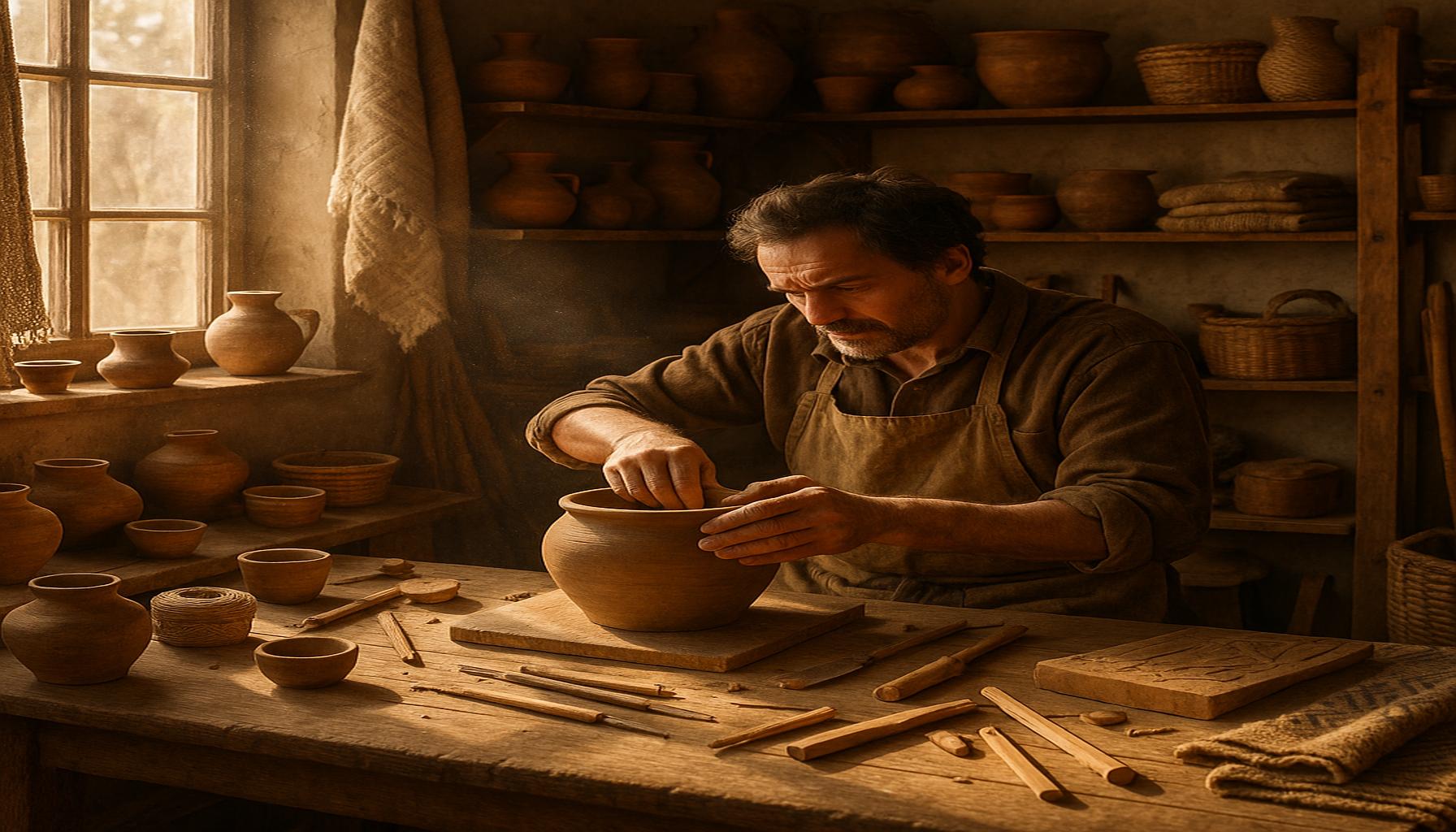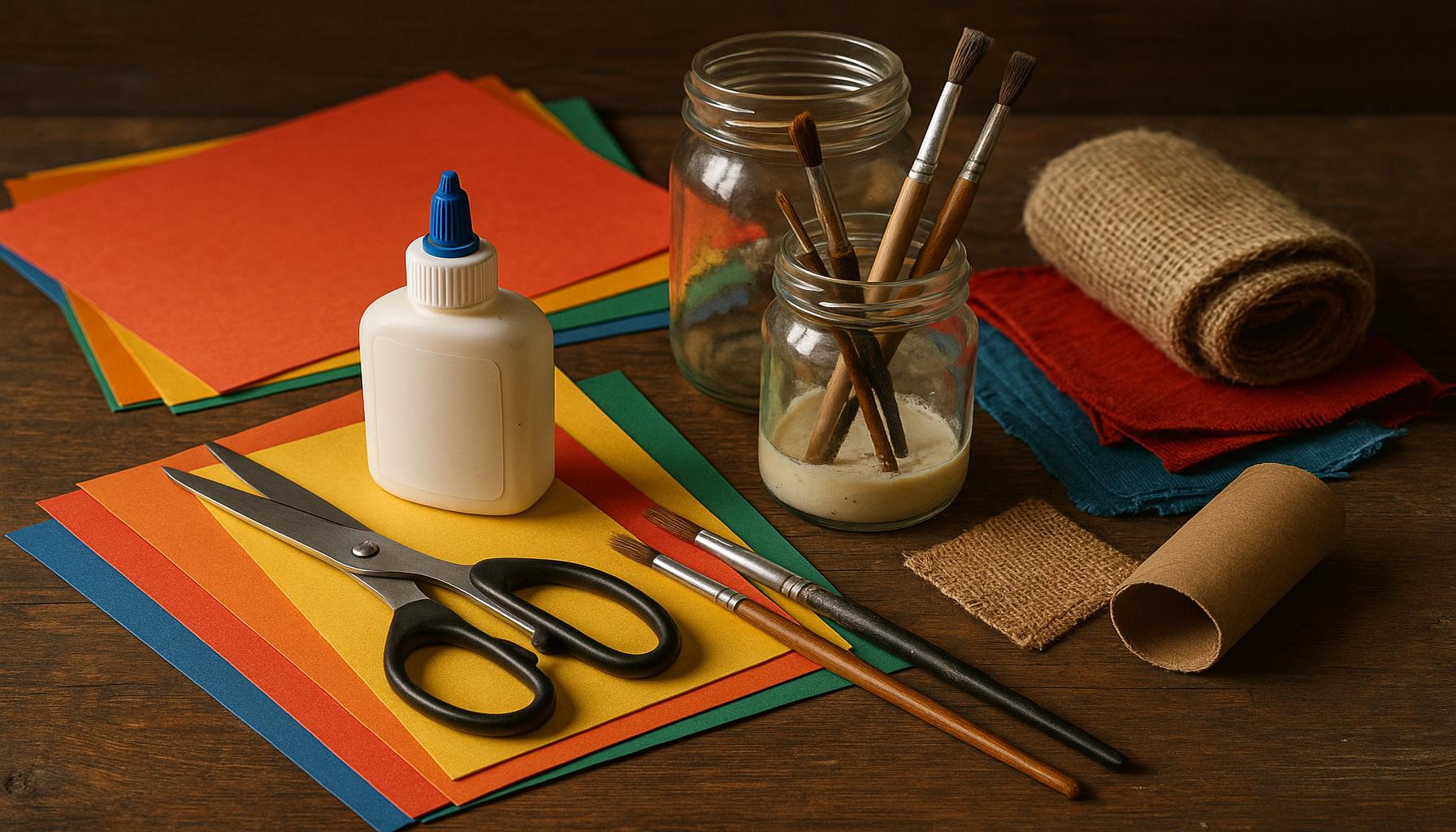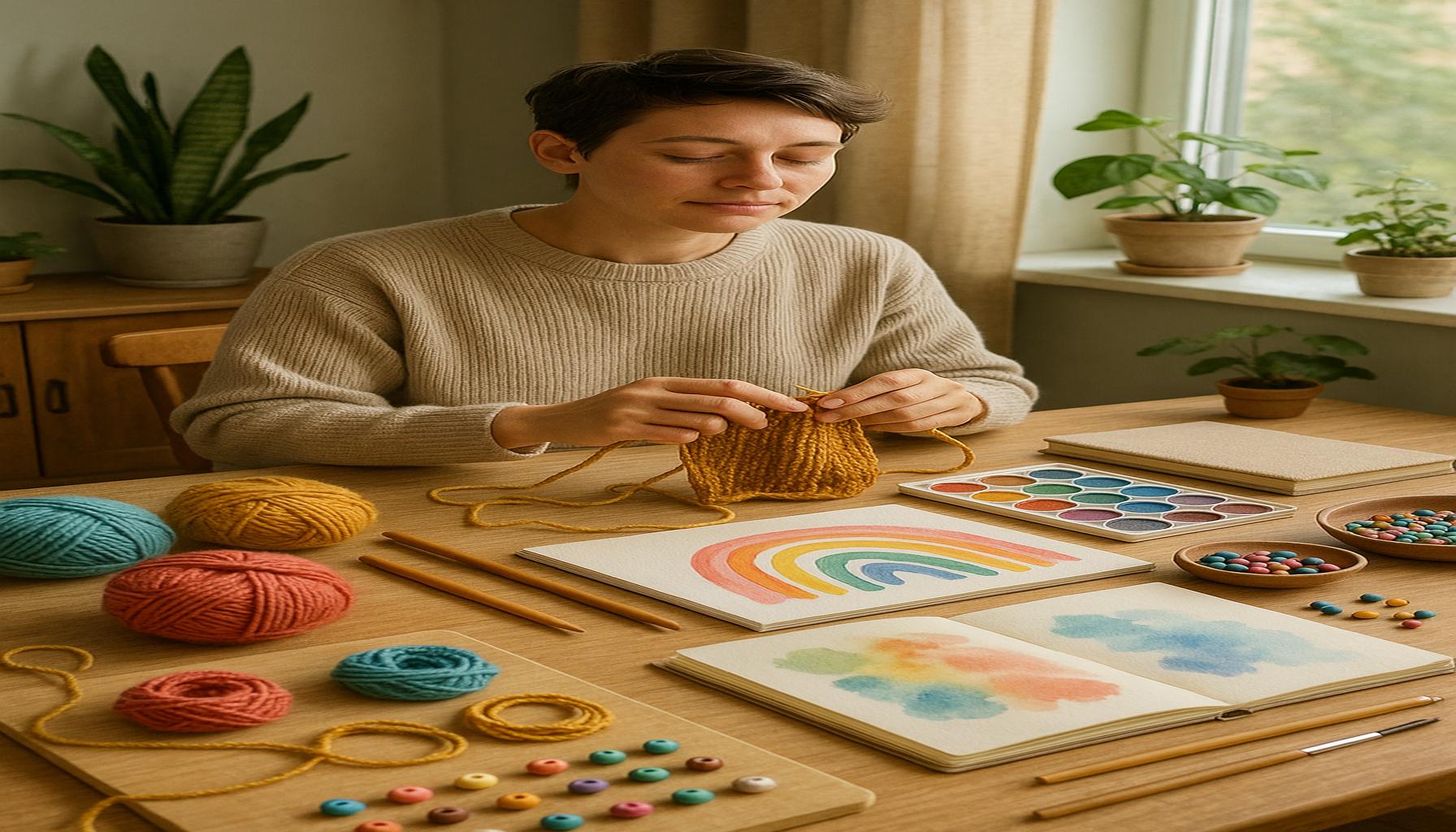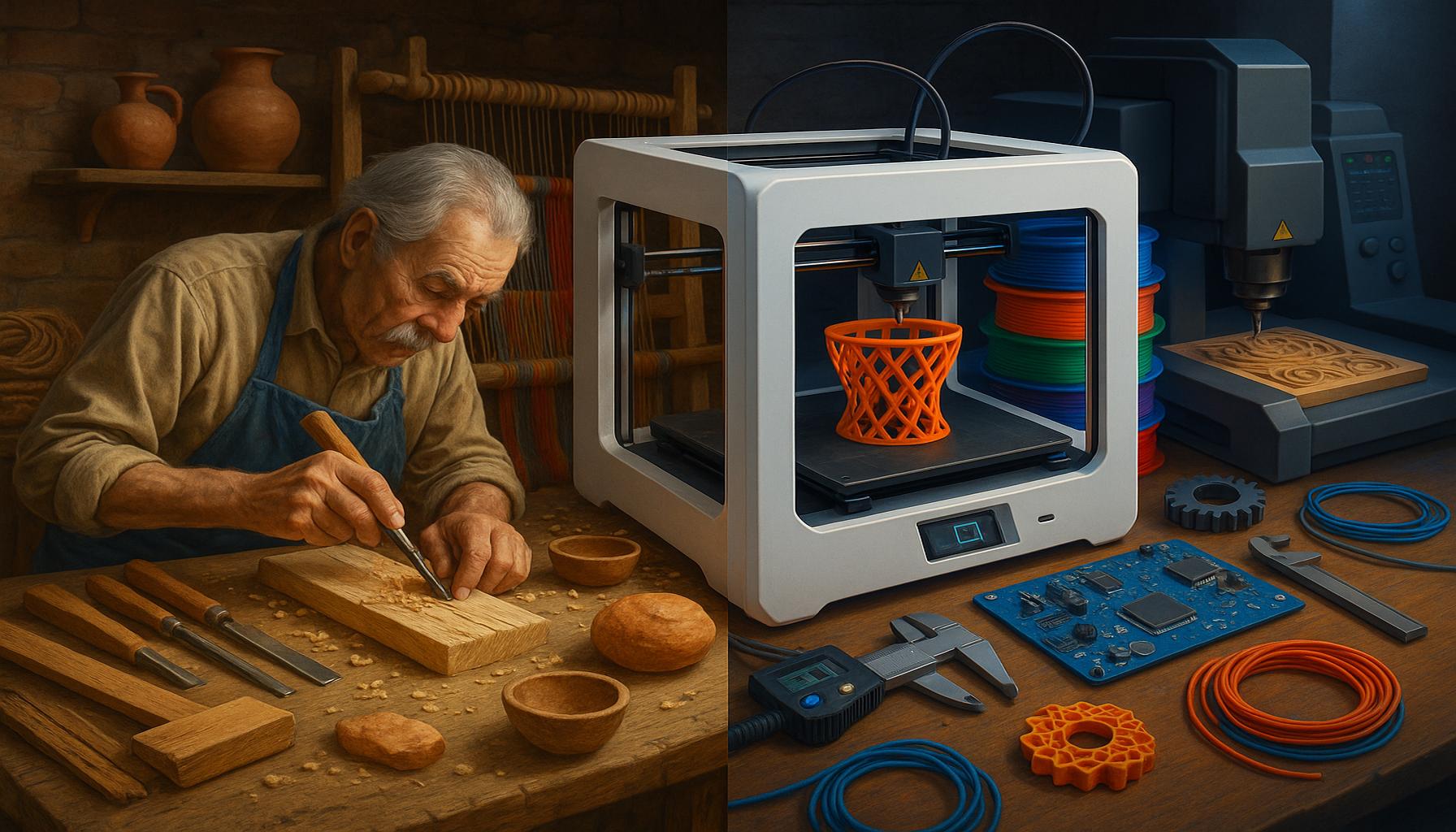The Renaissance of Craftsmanship in Times of Crisis: Crafting as a Form of Resilience

The Resurgence of Craftsmanship in Modern Times
In recent years, especially amidst global upheaval, many have turned to hands-on creative endeavors as a means of expression and survival. The COVID-19 pandemic, social unrest, and economic uncertainty have prompted a significant renaissance of craftsmanship. Individuals are revisiting age-old skills, seeking to restore not only their sense of purpose but also their emotional and mental stability. Crafting today transcends mere hobbyist activities; it has morphed into a crucial avenue of resilience.
There are several compelling reasons behind the remarkable growth of this trend:
- Therapeutic Outlet: Engaging in crafting activities reduces stress and anxiety, providing a mindful escape from everyday challenges. Various studies have shown that activities like knitting and pottery can lower cortisol levels and promote relaxation, making hands-on projects a viable form of therapy.
- Community Building: During times of isolation, local maker spaces, online crafting platforms like Etsy and social media groups have blossomed, creating vibrant communities among artisans and enthusiasts. These connections are not only supportive but also foster collaboration, where people share techniques, tips, and even resources.
- Revitalizing Local Economies: The resurgence of craftsmanship has significant economic implications. Handmade goods, from artisanal food products to handcrafted furniture, generate income for small businesses and independent creators. Local markets and fairs have also become focal points for these crafters, thereby boosting tourism and community engagement.
Throughout the United States, numerous stories of this creative revival illustrate the wave of interest in craftsmanship. For example, in urban centers, pottery studios are bustling with classes that attract diverse participants eager to mold clay, while in small towns, knitting circles have re-emerged as quintessential social gatherings, bridging generational gaps and fostering a sense of belonging.
This journey through craftsmanship highlights the powerful potential within individuals to adapt and thrive in the face of adversity. As we delve deeper into this cultural phenomenon, we will uncover the myriad ways in which crafting not only serves as a channel of personal expression but also as a beacon of hope and resilience during challenging times.
The blend of creativity and community spirit is paving the way for a revitalized landscape where artisanal skills flourish, reflecting a world where people embrace their creativity not just as a pastime, but as a vital component of their identities. Whether it’s through pottery, woodworking, or painting, this crafting renaissance encourages exploration and discovery, inspiring countless Americans to reconnect with their creative roots.

DIVE DEEPER: Click here to discover the impact of music on your well-being
The Therapeutic Power of Crafting
The resurgence of craftsmanship during turbulent times is not solely rooted in economic necessity; it is also deeply intertwined with the psychological benefits these creative activities yield. **Crafting**, whether it involves sewing, woodworking, or painting, offers a powerful therapeutic outlet that fosters both mental and emotional well-being. In a world riddled with uncertainty, engaging in crafting allows individuals to channel their feelings into tangible creations, providing a sense of accomplishment and control.
According to a study published in the *Journal of Positive Psychology*, engaging in creative activities can significantly enhance mood and reduce symptoms of anxiety and depression. Participants reported that the act of creating something with their hands allowed them to escape the pressures of daily life. This sense of autonomy is crucial, as it cultivates a space where individuals can reclaim their identity amid chaos. Here are some ways that crafting contributes to mental health:
- Meditative State: Repetitive tasks such as knitting or crafting with clay often place individuals in a meditative state, which helps clear the mind and enhance focus.
- Accomplishment and Satisfaction: Completing a craft project generates a sense of achievement, empowering individuals and reinforcing their skills, which may have been neglected or underutilized due to life’s demands.
- Reduced Isolation: Crafting can alleviate feelings of loneliness. The rise of virtual classes and workshops allows hobbyists to participate in communal creative experiences from the comfort of their homes.
The bonding potential of crafting also plays a pivotal role in enhancing resilience. As more individuals turn to community-oriented craft groups, traditional and contemporary crafting techniques are being shared and celebrated. Persons of diverse backgrounds find common ground in their shared interests, fostering deeper connections and a sense of belonging during isolating times. This camaraderie is palpable in the growing number of local and online groups dedicated to specific crafts, creating a welcoming atmosphere for enthusiasts new and old. Events such as “Craft Nights” or “Maker Faires” have exploded in popularity, not just as places to sell goods but as vibrant social hubs.
Moreover, as Americans navigate through the complexities of a post-pandemic society, the emphasis on **local economies** has led to a newfound appreciation for handmade products. As people step away from mass production, they increasingly seek unique, artisanal goods that resonate with their personal values. This shift benefits small businesses and encourages sustainable practices, as crafters prioritize eco-friendly materials and processes. The affection for handcrafted items not only reinforces a sense of community but also promotes local artisans, empowering them to thrive in a time when economic hardships are prevalent.
The interplay of creativity and community in craftsmanship thus emerges as a crucial fabric of resilience. As people rediscover their creative potential, they are not merely engaging in a pastime; they are cultivating personal growth, emotional healing, and collective strength amid adversity. Understanding this transformative experience opens the door to a deeper appreciation of the role that crafting can play in our lives, positioning it as a beacon of hope in uncertain times.
The Renaissance of Craftsmanship in Times of Crisis: Crafting as a Form of Resilience
Craftsmanship has long served as a medium for both creativity and survival, and its resurgence during times of crisis exemplifies the profound human spirit and adaptability. The arts not only condition the hands and minds of individuals but foster community resilience. As people turn to crafting in moments of uncertainty, they find solace and purpose. Handcrafted goods are reborn as symbols of resourcefulness that counter consumerism, enhancing local economies and sustainable practices.
Connection and Community
One of the most salient benefits of this movement is the connection to community. Local artisans often collaborate, sharing skills and techniques that enrich their craft and build bonds. The resurgence of craftsmanship creates a ripple effect; workshops and community spaces emerge to educate and invite participation, enhancing social cohesion. Furthermore, handmade goods carry stories and histories that resonate with consumers, drawing them into a deeper relationship with their purchases.
Mindfulness and Mental Health
Engaging in crafting activities also promotes mindfulness, a practice increasingly recognized for its mental health benefits. During troubling times, crafts such as knitting, woodworking, or pottery enable individuals to focus their thoughts and channel anxieties into creative outlets. This therapeutic effect has been documented extensively, revealing that participating in hands-on activities can enhance emotional well-being, reduce stress, and foster a sense of accomplishment. As we navigate the complexities of our current world, crafting offers a haven where individuals can reclaim control through Creation.
Environmental Impact
Moreover, the renaissance of craftsmanship has important implications for sustainability. With a growing awareness of environmental issues, many artisans are reclaiming traditional techniques that prioritize local materials and lower carbon footprints. This not only preserves cultural heritage but also aligns with a global movement toward sustainable living. The shift from mass-produced to handcrafted items encourages recycling, upcycling, and the mindful consumption of resources, making every crafted piece a responsible choice.In summary, the revival of craftsmanship during crises serves as a symbol of resilience, providing opportunities for connection, mindfulness, and sustainable practices. As we embrace this renaissance, we must continue to explore the multifaceted benefits that crafting brings to individuals and society at large.
DISCOVER MORE: Click here for vertical gardening tips!
Reviving Traditional Skills: A New Wave of Artisans
As the interest in craftsmanship grows, there is a marked revival of traditional skills that had seemingly faded into obscurity. Many individuals are not only seeking solace in crafting but are also engaging in learning skills that connect them to their forebears. Techniques such as woodworking, metalworking, pottery, and textile arts are being rediscovered, thereby reviving age-old traditions and breathing new life into their cultural significance.
Local workshops and community colleges across the United States have reported a surge in enrollment for courses that teach these traditional crafts. For example, in cities like Asheville, North Carolina, and Portland, Oregon, numerous artisan schools have emerged to cater to this newfound passion. The allure of creating something using classic techniques resonates with many who are looking for authenticity in their manufactured worlds. In addition to restoring these crafts, participants celebrate the stories and histories that accompany each technique, fostering a richer cultural understanding.
Moreover, the internet has played a crucial role in democratizing access to these skills. Platforms such as YouTube and Instagram enable artisans to share their work and tutorials, creating expansive virtual communities and enabling others to learn from home. Enthusiasts can explore everything from woodworking basics to intricate lace-making, fostering a spirit of mentorship and knowledge-sharing that engenders resilience. Individuals benefiting from this global sharing of skills find encouragement and inspiration, connecting with others who share their passions and aspirations.
Furthermore, the rise of **DIY** culture amidst the economic uncertainty has inspired countless individuals to transform their homes with handmade furnishings, decor, and textiles. By repurposing materials or crafting from scratch, people regain a sense of investment in their environments that mass-produced goods often lack. Creating an aesthetic of comfort and uniqueness within one’s space can serve as a powerful act of self-expression amidst the stress of contemporary life.
In parallel with this renaissance of traditional skills, entrepreneurship in the crafting realm is flourishing. The marketplace for handmade products is booming, with platforms like Etsy enabling artisans to reach a broader audience. The ‘shop small’ movement has resonated strongly, bolstering support for local artisans and handmade goods. According to the *2022 Etsy Seller Survey*, over 80% of U.S. consumers expressed a preference for purchasing handmade products over mass-produced alternatives, signaling a desire for authenticity and personal connection in their purchases. This trend not only provides artists with financial stability but also fosters a sense of pride and community engagement.
This surge in craftsmanship shatters stereotypes of traditional artisans being relegated to a bygone era. Instead, it showcases a contemporary interpretation that emphasizes sustainability, creativity, and emotional health. Additionally, the attention being directed toward sustainable materials aligns with the growing global call for environmentally responsible practices. As crafters prioritize eco-friendly approaches, they contribute not only to the arts but also to broader movements promoting sustainability and mindful consumerism.
The renaissance of craftsmanship during times of crisis becomes a multilayered phenomenon, bridging the gap between artistry and well-being. It empowers individuals to reclaim autonomy, celebrates shared cultural heritage, and promotes community resilience in the face of adversity. In uncovering these layers, we can appreciate how craftsmanship is not just a hobby but a vehicle for healing, connection, and transformation.
DISCOVER MORE: Click here to learn about eco-friendly crafting
Embracing the Crafting Renaissance: A Path to Community and Healing
In conclusion, the renaissance of craftsmanship during times of crisis serves as a profound testament to human creativity and resilience. The resurgence of traditional skills not only fosters a connection to cultural heritage but also cultivates a sense of community among craftsmen and enthusiasts alike. By immersing ourselves in practices such as woodworking, pottery, and textiles, we find avenues for self-expression and means to enrich our lives during uncertain times.
This movement embodies much more than mere nostalgia; it emphasizes sustainability and personal investment, offering individuals the power to reclaim their environments and engage meaningfully with the world around them. The surge in DIY culture, complemented by accessible online resources, has democratized craftsmanship, enabling a diverse array of voices to emerge in the artisan landscape. The growing preference for handmade goods over mass-produced items highlights a collective yearning for authenticity and connection, resulting in not just economic opportunities for artisans but also a strengthened support network within local communities.
The ongoing revival of craftsmanship showcases the transformative potential of creative pursuits as a bulwark against adversity. As we delve into this renaissance, we must recognize crafting not just as a pastime, but as a critical part of building resilience and fostering emotional well-being. Through exploring these rich traditions, we uncover pathways to heal, create, and forge connections that endure long after the crisis has passed. As more individuals embrace this journey, the artistry of craftsmanship will continue to thrive, reminding us of our shared humanity in turbulent times.


